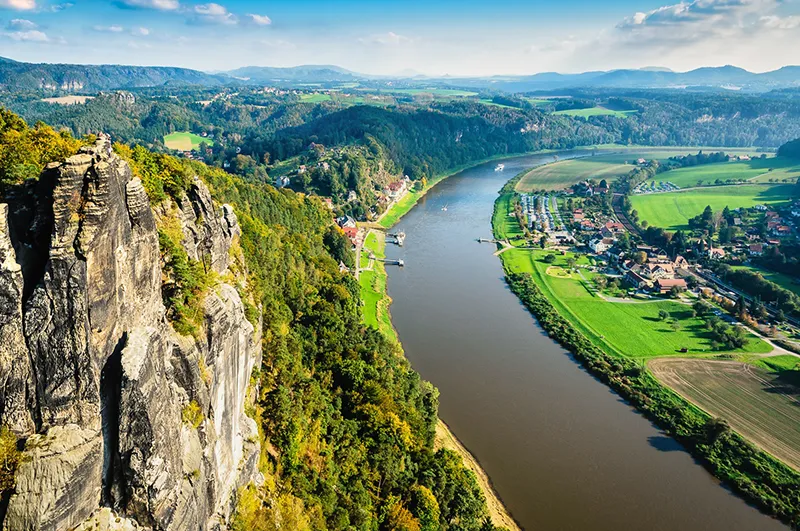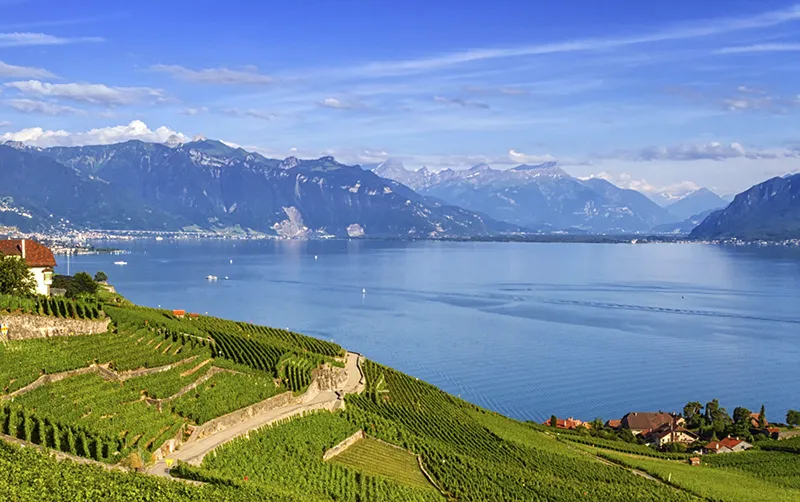The Baltic Sea is the only access to the ocean for most countries in the Baltic region. Not surprisingly, because of its military-strategic position and economic importance, greedy eyes have always turned to this sea. The sea plays an important role in the region’s trade, transportation and fishing. It is also a popular destination for recreation and tourism. There are many historical cities and cultural sites around the sea, making it significant not only economically but also culturally.
History
Until the 11th century, the Vikings were the only major force in the Baltic Sea region, which is why the ancient Slavs called the sea Varangian. In the XII century the union of German merchant guilds (the forerunner of the future Hanseatic League) started a wide trade in the Baltic. Its largest center was the city of Visby on the island of Gotland. Poland, Sweden and Denmark also fought for control over the sea. In XIII-XIV centuries. a serious blow to the positions of the Slavic states struck the Teutonic Order, which seized the southeastern coast of the Baltic, as well as Gotland and organized a large military-colonization state. Poland, Lithuania and Russia lost their access to the Baltic Sea, and the Teutons took all the key positions. Many cities of the Order became members of the Hanseatic League, founded in the mid-14th century and reached its heyday by the 15th century. This powerful trade union included up to a hundred cities, including Danzig (Gdansk), Revel (Tallinn), Riga, Derpt (Tartu). The Baltic Sea transported cloth from Germany and England, fur and grain from Eastern Europe, metals and fish from Scandinavia, as well as goods from Central Europe and even Mediterranean countries. The importance of the Baltic Sea for contacts between East and West had especially increased by the 16th-17th centuries, but at that time the Hanse had already ceded its position to Dutch, French and English merchants.
As a result of numerous Danish-Swedish and Polish-Swedish wars, as well as the Thirty Years’ War, Swedish hegemony was established in the Baltic Sea. For Russia, access to the sea was paved by Peter the Great, who built St. Petersburg in 1703 and defeated the Swedes in the Great Northern War. After 1721, Russia controlled the entire Eastern Baltic. St. Petersburg became the country’s main foreign trade port, and Kronstadt became the main base of the Russian Baltic Fleet. In the 19th century, Germany strengthened its position, but the results of the two world wars prevented the Germans from deploying in the Baltic.
Ecology
Today the main problem of the Baltic Sea is ecology. After World War II, bombs and chemical weapons were buried here. At the bottom there is a graveyard of ships with dangerous cargoes. In addition, with such a limited water exchange with the World Ocean, the sea is polluted by industrial wastewater from coastal states. In 1974, the Baltic States signed the Convention on the Conservation of the Marine Environment, which was reaffirmed by the Baltic Sea Declaration in 1990 to ensure its ecological revitalization.
Despite the ecological situation, there are still many resorts on the eastern and southern coasts of the sea where people relax and receive medical treatment: Jurmala in Latvia, Palanga in Lithuania, Pärnu in Estonia, Svetlogorsk and Zelenogradsk in the Kaliningrad region, Binz on the island of Rügen in Germany, Sopot in Poland. Vacationers are attracted by pine forests, sandy beaches, mild sea climate without exhausting summer heat.
Geography
The shape of the Baltic Sea is very peculiar. It cuts deeply into the land and only in the south-western part, through the straits of Eresund (Zund), Great and Small Belypy, and then through Kattegat and Skagerrak connects with the North Sea. The western and southernmost points of the sea are located in Germany – respectively near Flensburg and Wismar, the eastern point near St. Petersburg, and the northern point near the town of Haparanda (Sweden).
The Baltic Sea acquired its present form only four thousand years ago. The rise and fall of the Earth’s crust that took place before that transformed it from lake to sea and back again. The process is not yet complete. Who knows, maybe in the future the connection with the ocean will be broken again….
About 13,000 years ago, the Baltic Sea was replaced by a fresh, cold glacial lake. As a result of further melting of glaciers, a channel was formed that connected the lake with the Atlantic Ocean, and as a result, the Ioldian Sea appeared about 10 thousand years ago.
It existed not more than a thousand years – the connection with the ocean was interrupted due to tectonic uplift of the southern part of Scandinavia, and the sea again became a lake – the Antsilov Sea. The next natural cataclysms led to reconnection of the lake with the ocean through the modern Danish straits.
The level of the resulting Littorina Sea gradually fell. The current level of the Baltic Sea is about six meters lower than it was four millennia ago.
The shores surrounding the sea vary in origin and shape. In the south they are lagoons, sand dunes and forests. In the north, the coastline is strongly indented, with many rocky islands and skerries. The bottom relief is also complex and uneven. The Baltic Sea is very shallow; for the most part it lies within the limits of the continental shelf. The prevailing depths are 40-100 meters. There are several troughs. The greatest depth is in the Landsort Basin between Stockholm and Gotland (459 m).
The sea level fluctuates greatly under the influence of winds. The western winds cause the inflow of water from the North Sea, while the eastern winds cause the outflow into it through the shallow straits of Eresund, Great and Small Belt. Accordingly, the salinity of the water is constantly changing. In the Baltic Sea it is extremely low due to limited communication with the world ocean and a large amount of river runoff. Currents form a counterclockwise cycle, sometimes disturbed by winds. Sea swell is generally insignificant.
Nature
Due to the low salinity of the water, the fauna of the sea is not particularly diverse, many marine species are not found here, but those that are, are represented in large numbers – herring (Baltic subspecies of Atlantic herring), sprat, cod, flounder, eel, perch. Among mammals there is the Baltic seal.
In the cold season all the bays are covered with permanent ice, in the central part of the sea in severe winters there are floating ice.
General information
- Baltic countries: Denmark, Estonia, Finland, Germany, Latvia, Lithuania, Poland, Russia, Sweden, Estonia, Finland, Germany, Latvia, Lithuania, Poland.
- The largest bays: Gulf of Bothnia, Gulf of Riga, Gulf of Finland.
- Main ports: Stockholm, Turku, Helsinki, St. Petersburg, Tallinn, Riga, Kaliningrad, Gdansk, Rostock, Copenhagen, Kiel, Szczecin, Klaipeda, Ventspils.
- The largest islands: Åland Islands, Bornholm, Gotland, Rügen, Saaremaa, Hiiumaa, Eland.
- The largest rivers flowing into the sea: Neva, Daugava, Neman, Venta, Vistula, Oder.
- Area: 412,560 km2 with Kattegat, about 390,000 without Kattegat.
- Average depth: 52 m.
- Maximum depth: 459 m (Landsort Basin).
- Salinity: varies from 20% in the open sea to 0.2% in the Gulf of Finland and Gulf of Bothnia.
Economy
- Fishing: herring, sprat, cod, flounder, salmon, eel, molluscs, crustaceans.
- Shipping, cargo-passenger transportation.
- Mineral resources: oil, amber, iron, manganese, shale.
- Tourism
Climate and weather
- Temperate maritime.
- In summer, the temperature of surface water layers fluctuates between +13ºC and +18ºC.
- In winter, the Baltic Sea partially freezes over.
Fun facts
- The Baltic Sea and the North Sea are connected not only by natural routes, but also by one artificial one. This is the Kiel Canal in Germany, built in 1895 and connecting the Bay of Kiel with the mouth of the Elbe River.
- The Baltic Sea Day is celebrated every year on March 22, according to the decision of the Helsinki Convention adopted in 1986.
- The origin of the name of the sea is not definitively clarified. Pliny the Elder in “Natural History” mentioned the island of Baltia. Since the XI century the Western European name Balticum is known. It may be based on the Lithuanian word baltas or Latvian baits – “white” – after the color of sandy shores.
- In September 1994, a tragedy occurred in the Baltic Sea. The ferry “Estonia”, traveling from Tallinn to Stockholm, sank here. Only 140 out of 1049 passengers survived.
- Scandinavian countries finance a number of facilities located in St. Petersburg that are crucial for the ecology of the Baltic Sea.




